Neandertals on the beach: Use of marine resources at Grotta dei Moscerini (Latium, Italy)
- PMID: 31940356
- PMCID: PMC6961883
- DOI: 10.1371/journal.pone.0226690
Neandertals on the beach: Use of marine resources at Grotta dei Moscerini (Latium, Italy)
Abstract
Excavated in 1949, Grotta dei Moscerini, dated MIS 5 to early MIS 4, is one of two Italian Neandertal sites with a large assemblage of retouched shells (n = 171) from 21 layers. The other occurrence is from the broadly contemporaneous layer L of Grotta del Cavallo in southern Italy (n = 126). Eight other Mousterian sites in Italy and one in Greece also have shell tools but in a very small number. The shell tools are made on valves of the smooth clam Callista chione. The general idea that the valves of Callista chione were collected by Neandertals on the beach after the death of the mollusk is incomplete. At Moscerini 23.9% of the specimens were gathered directly from the sea floor as live animals by skin diving Neandertals. Archaeological data from sites in Italy, France and Spain confirm that shell fishing and fresh water fishing was a common activity of Neandertals, as indicated by anatomical studies recently published by E. Trinkaus. Lithic analysis provides data to show the relation between stone tools and shell tools. Several layers contain pumices derived from volcanic eruptions in the Ischia Island or the Campi Flegrei (prior to the Campanian Ignimbrite mega-eruption). Their rounded edges indicate that they were transported by sea currents to the beach at the base of the Moscerini sequence. Their presence in the occupation layers above the beach is discussed. The most plausible hypothesis is that they were collected by Neandertals. Incontrovertible evidence that Neandertals collected pumices is provided by a cave in Liguria. Use of pumices as abraders is well documented in the Upper Paleolithic. We prove that the exploitation of submerged aquatic resources and the collection of pumices common in the Upper Paleolithic were part of Neandertal behavior well before the arrival of modern humans in Western Europe.
Conflict of interest statement
The authors have declared that no competing interests exist.
Figures


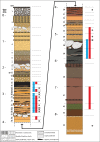


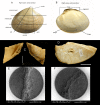

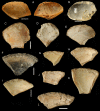

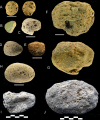
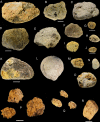




References
-
- Tozzi C. La grotta di Sant’Agostino (Gaeta). Rivista di Scienze Preistoriche 1970; 25: 3–87.
-
- Stiner MC. Honor among thieves: A zooarchaeological study of Neanderthal ecology. Princeton: Princeton University Press; 1994.
-
- Kuhn SL Mousterian lithic technology. Princeton: Princeton University Press; 1995.
-
- Vitagliano S. Nota sul Pontiniano della Grotta dei Moscerini, Gaeta (Latina). Atti della XXIV Riunione Scientifica dell’Istituto Italiano di Preistoria e Protostoria, Firenze, 1984; pp. 155–164.
-
- Schwarcz HP, Byhay W, Grün R, Stiner M, Kuhn S, Miller GH. Absolute dating of sites in coastal Lazio. Quaternaria Nova 1990. –1991; 1: 51–67.
Publication types
MeSH terms
Substances
LinkOut - more resources
Full Text Sources

